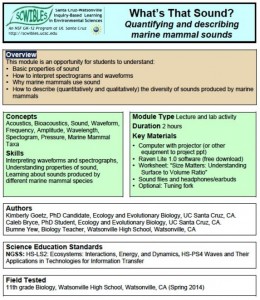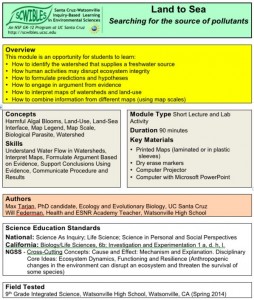 Quantifying and Describing Marine Mammal Sounds
Quantifying and Describing Marine Mammal Sounds
by Caleb Bryce, Kimberly Goetz and Burnee Yew
Marine mammals use sound for feeding, communication, predator avoidance, and navigation. Students are introduced to the properties of sound by quantifying and describing sounds from several types of marine mammals (toothed whales, baleen whales, sea lions, and true seals). Students examine differences in sounds between marine mammal species and then use that knowledge to predict the source of a mystery sound.
Students learn: 1) Basic properties of sound, 2) How to interpret spectograms and waveforms, 3) Why marine mammals use sound, and 4) How to describe the diversity of sounds made by marine mammals.
Docs: fulltext.docx labworksheet.docx labworksheetkey.xls worksheet.docx worksheetkey.docx photocredit.xlsx
Keywords: bioacoustics, communication, HS-LS2, HS-PS4, marine mammals, sound

